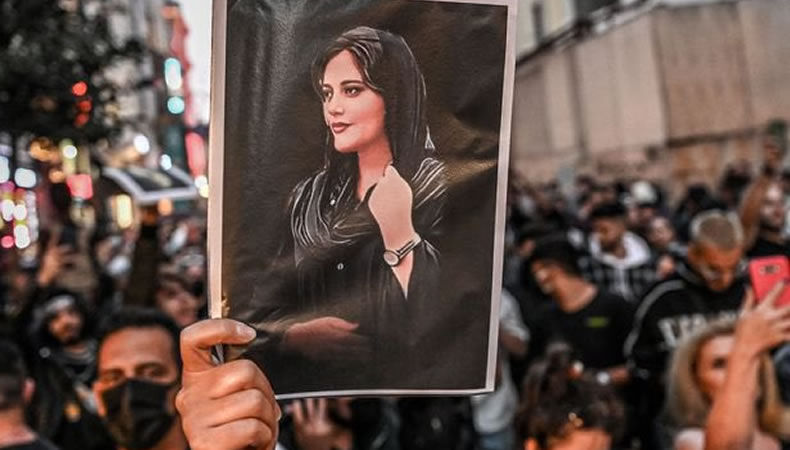Iranian artists call for boycott of arts organizations linked to Tehran regime

The foreign community has been urged in a statement by a number of Iranian artists to quit collaborating with cultural groups that have ties to the Tehran dictatorship.
In response to the widespread detention and arrest of students nationwide for their roles in anti-regime protests following the death of 22-year-old Kurdish woman Mahsa Amini at the hands of the morality police in September, the statement—signed by over 6,000 artists, academics, writers, and film directors—was released.
In response to the regime’s “increasingly brutal, violent and deadly state crackdown,” which has resulted in at least 300 fatalities and roughly 14,000 people being detained, the statement urges the international community to “boycott governmental institutions of the Islamic state of Iran and their covert affiliates, and prevent them from having any presence in international arenas of arts, culture, and education.”
One of the signatories, curator Vali Mahlouji of London, has also urged demonstrators to take direct action against Iranian-funded arts organizations.
According to Mahlouji, several private Iranian galleries are linked to the financial infrastructure of the Iranian government, particularly the Islamic Revolutionary Guards Council. They should be avoided.
Read | FIFA World Cup: Iran miffed over brief flag removal by US soccer on social media
Since the start of the demonstrations, protesters have shown their dissatisfaction at the government through art, such as crimson nooses strung from trees and red dye poured into fountains.
Mahlouji remarked, “This is society saying: We are terrorized. There is a significant performative reaction: Some are being tied up, red paint is being thrown at buildings, photos of the Islamic Republic’s founder are being covered with red ink, and people are even peeing outside of art galleries that have remained open despite demands from artists that they close.”
By acting as the government’s “money-laundering arm,” some art galleries, according to Canadian-born artist Jinoos Taghizadeh, have “worked to depoliticize (Iranian) artists.”
She continued, saying that despite all of the repression, arrests, and kidnappings, Iranian art students who oppose the regime “were constantly threatened by the police and university security” and that “the performance of their music and protest songs and their publication on social media both encouraged the protesters and brought the voice of protest to other cities and outside Iran”
In other countries, art has also been utilized as a means of protest: Amini’s image and the phrase “Woman, Life, Freedom” were displayed on 12 red banners in October at the Guggenheim Museum in New York by a group known as the Anonymous Artist Collective for Iran.
Exiled Iranian artist Shirin Neshat unveiled a digital protest piece with the same phrase in London’s Piccadilly Circus and also showed it in Pendry West Hollywood in Los Angeles.
Neshat asserted: “We are not just a group of persecuted artists pleading with the West to feel bad for us. We’re informing them that it’s time to wake up and realize how important culture is to the structure of our global political system. We saw these gutsy young people facing oppression. You seriously doubt your mental health as an Iranian who has spent so many years being unable to live without terror. These young people who are declaring ‘no more fear’ give me great hope.”




